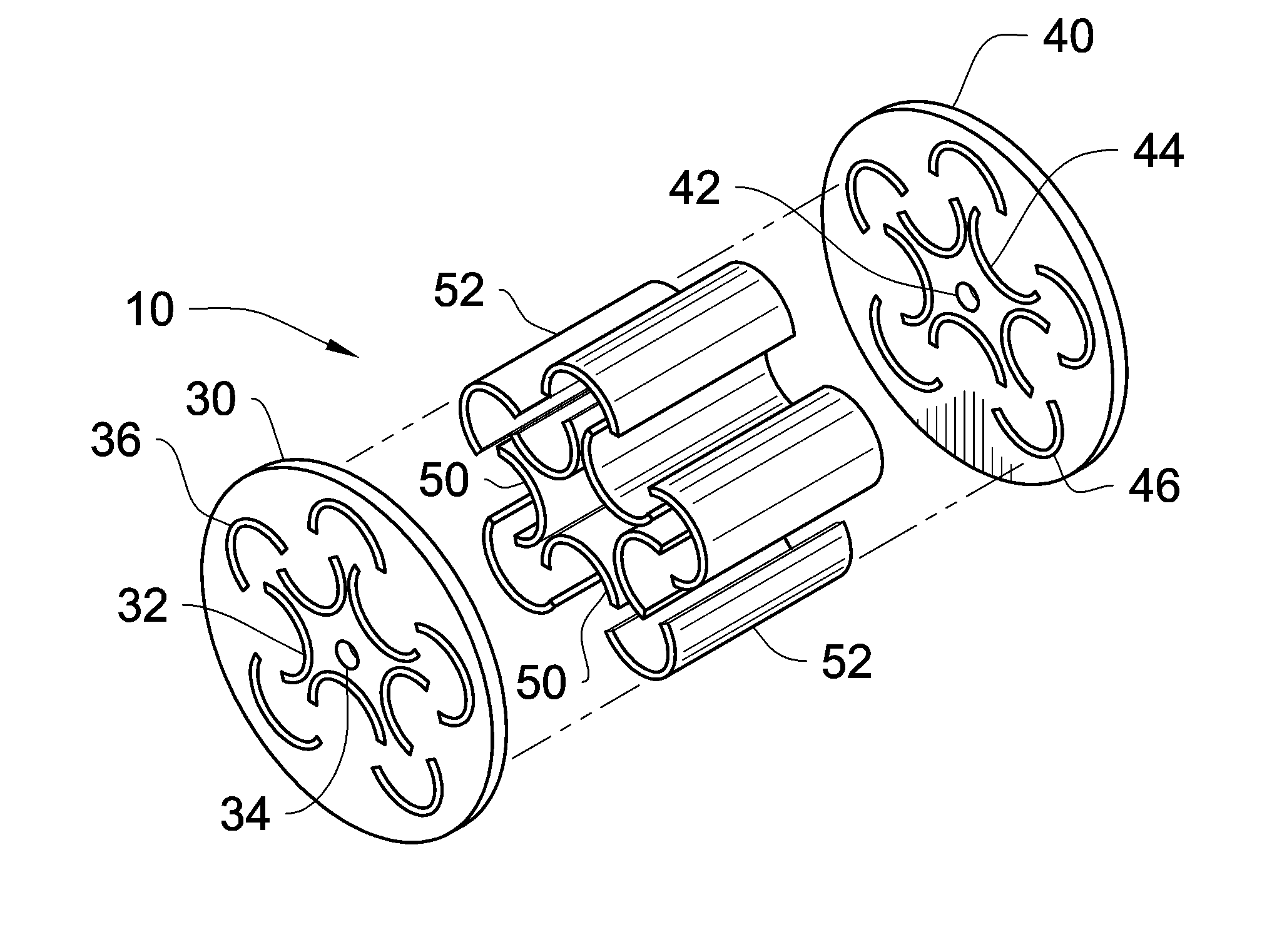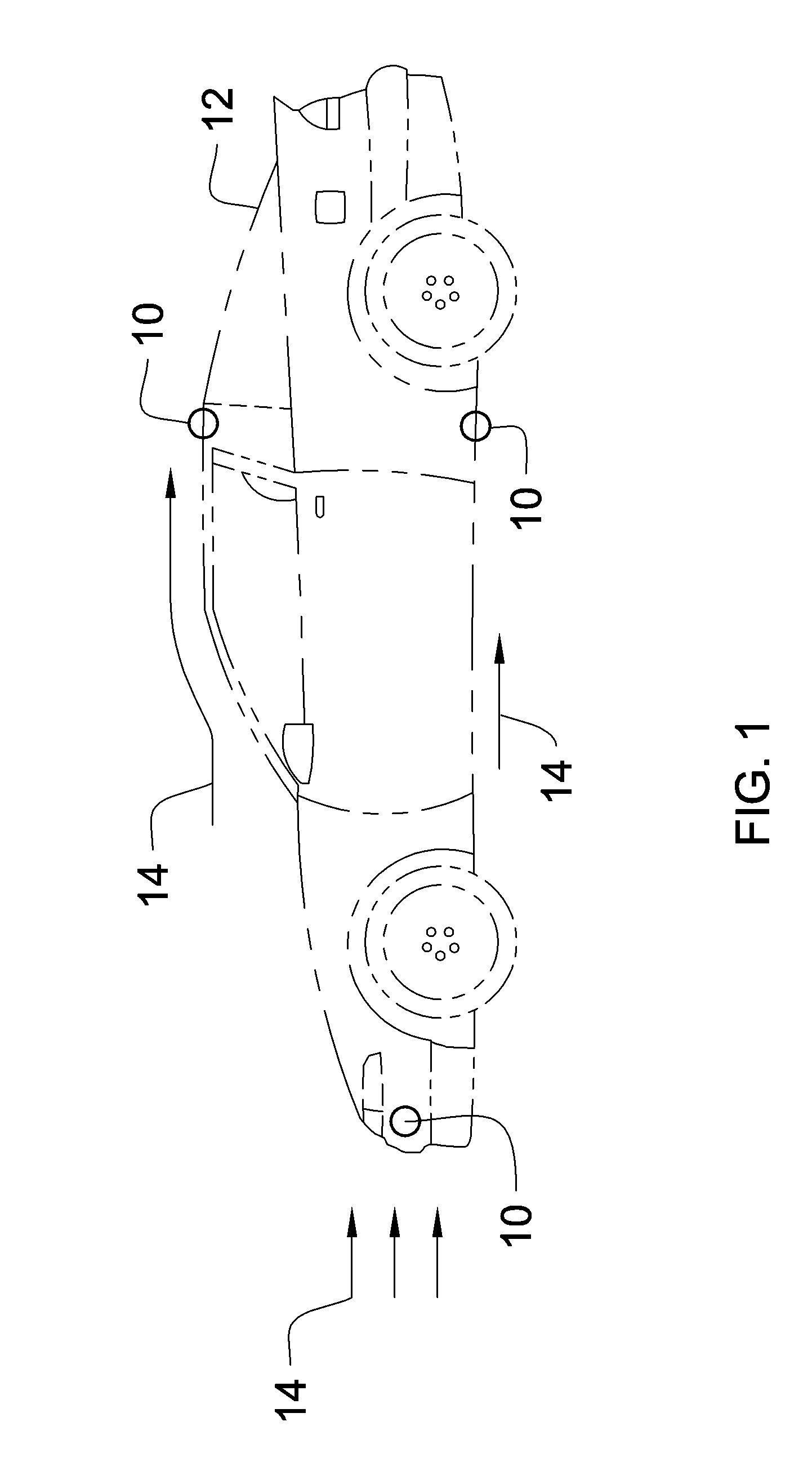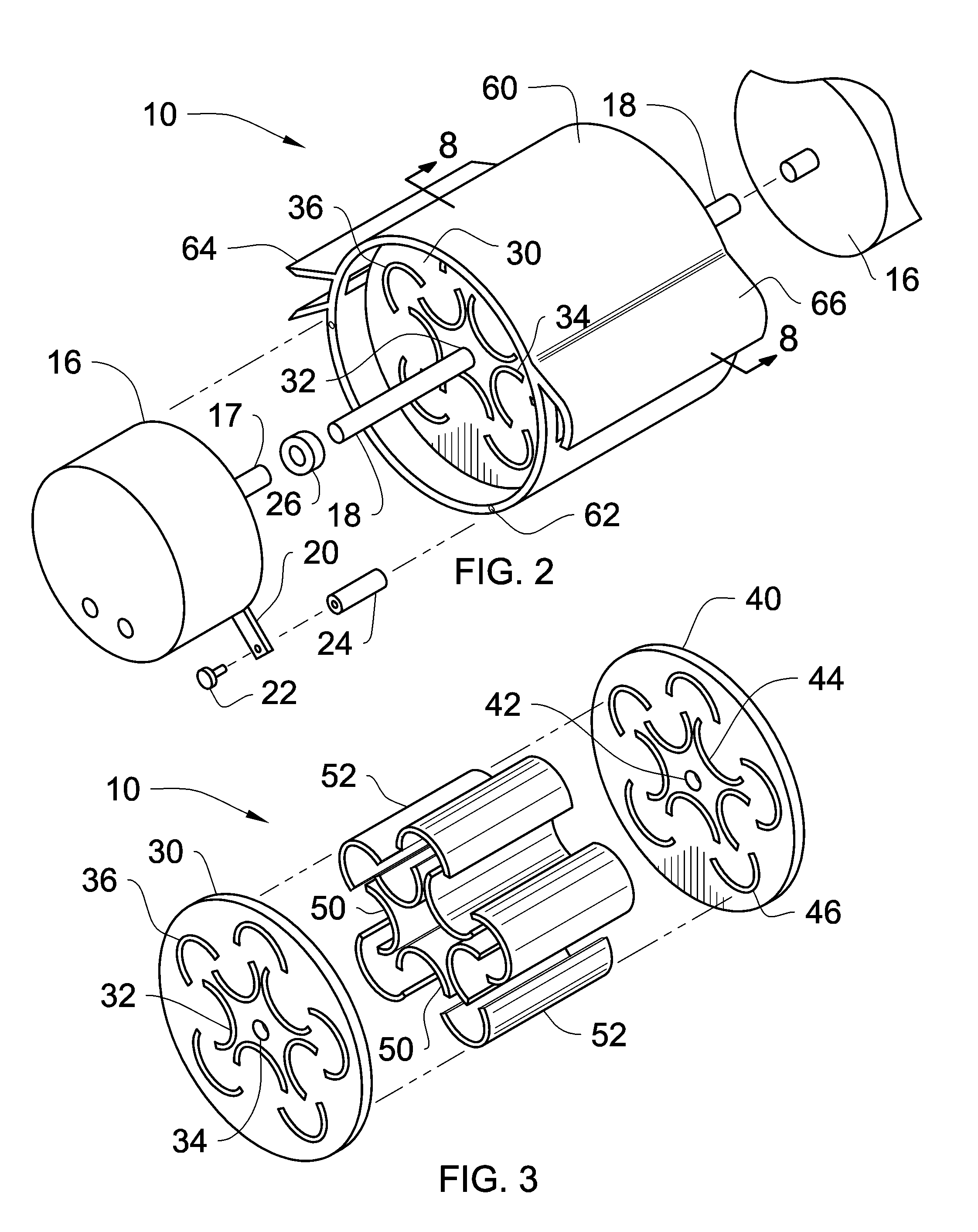Moving fluid energy recovery system
a technology of moving fluid and energy recovery, which is applied in the direction of non-positive displacement fluid engines, liquid fuel engine components, road transportation emission reduction, etc., can solve the problems of complex and difficult manufacturing of known devices, and efforts have not been successful in overcoming problems associated with prior known wind or water machines, etc., to achieve low manufacturing cost, easy and efficient manufacturing and marketing, and low price of sale
- Summary
- Abstract
- Description
- Claims
- Application Information
AI Technical Summary
Benefits of technology
Problems solved by technology
Method used
Image
Examples
Embodiment Construction
[0042]Referring now to the drawings and particularly to FIGS. 1-11, a preferred embodiment of the moving fluid energy recovery system of the present invention is shown and generally designated by the reference numeral 10.
[0043]In FIG. 1, a new and improved moving fluid energy recovery system 10 of the present invention for generating electricity through rotational motion produced by moving fluid 14 either by weather or a vehicle 12 in motion is illustrated and will be described. More particularly, the moving fluid energy recovery system 10 is a stand alone unit that is placed in the area of fluid flow 14 or can be removably attached to a moving vehicle 12 producing a fluid flow 14 when the vehicle is in motion. The fluid flow 14 can be any flowable fluid, such as but not limited to water, air, wind, liquids, slurries, dirt, and the like. The vehicle 12 can be any know traveling vehicle, such as but not limited to a motor vehicle, automobile, motorcycle, bicycle, aircraft, spacecraft...
PUM
| Property | Measurement | Unit |
|---|---|---|
| inlet angle | aaaaa | aaaaa |
| length | aaaaa | aaaaa |
| diameter | aaaaa | aaaaa |
Abstract
Description
Claims
Application Information
 Login to View More
Login to View More - R&D
- Intellectual Property
- Life Sciences
- Materials
- Tech Scout
- Unparalleled Data Quality
- Higher Quality Content
- 60% Fewer Hallucinations
Browse by: Latest US Patents, China's latest patents, Technical Efficacy Thesaurus, Application Domain, Technology Topic, Popular Technical Reports.
© 2025 PatSnap. All rights reserved.Legal|Privacy policy|Modern Slavery Act Transparency Statement|Sitemap|About US| Contact US: help@patsnap.com



